#Old Uppsala Archaeological Area
Photo



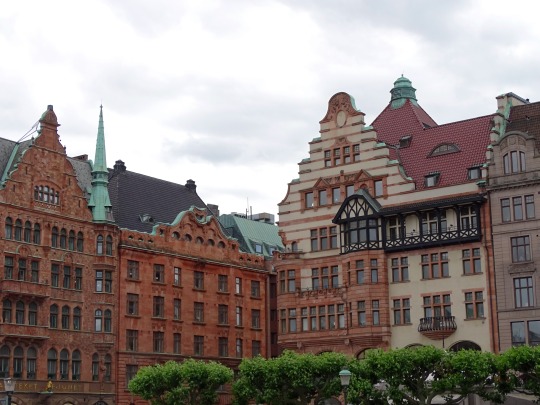

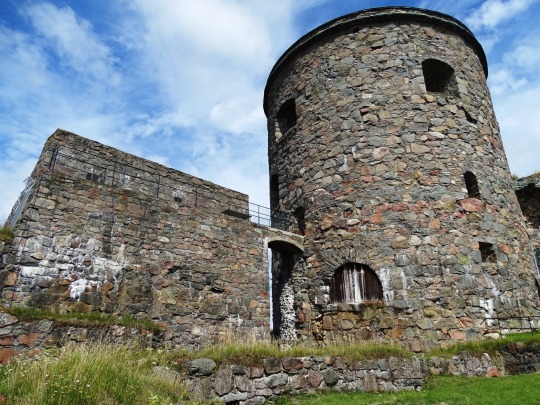

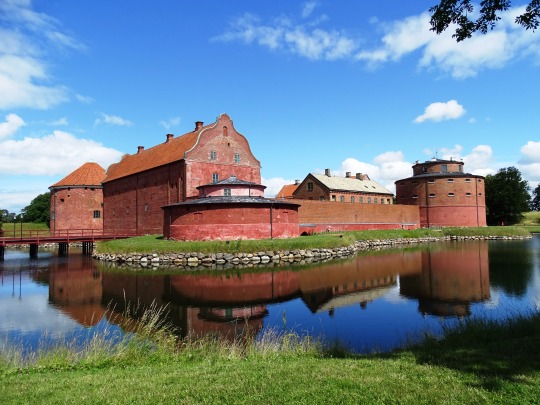

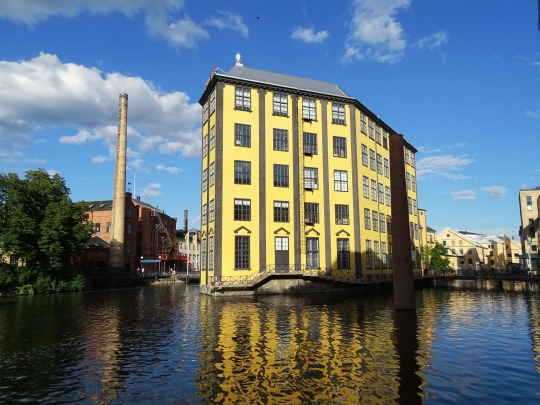
The National Day of Sweden (Swedish: Sveriges nationaldag) is a national holiday observed annually in Sweden on 6 June.
#Bohus Fortress#Norrköping#Byrums Raukar#Öland#Malmö#travel#Landskrona Castle#Smögenbryggan#Kattegat#Lake Överuman#Swedish Lapland#Old Uppsala Archaeological Area#landscape#cityscape#archaeology#Swedish history#countryside#vacation#summer 2020#Sverige#Sweden#Scandinavia#Northern Europe#National Day of Sweden#6 June#Sveriges nationaldag
27 notes
·
View notes
Note
I do not mean this in a negative way or is in no way criticizing you. I’ve just kind of noticed that somethings you add in your stories is before their time. It mainly small details such as Viking women wearing corsets, which as far as we know, they didn’t. Not a lot is known or at least completely confirmed during that time period so obviously you need to fill out. And of course you have the right to creative freedom when you write fiction. This was just something I have been thinking of.
Well, I've never written any of my characters as Heathen women. 🤔 Readers have always been Christians, foreigners or from faux Christians lands. The only half Heathen is in White Lies.
As with most writers, I do a great deal of research despite writing fiction. So here are some facts for you:
Historians are unsure if women wore hard stays (corset) in the early Medieval days or not. But light corsets and bodices were worn. They were made out of leather, linen and such fabrics and were sometimes stiffened with busks of wood or whalebone. Sometimes it was sewn directly into the garment or dress.
Furthermore, Fashion History reveals the first recorded corset originated from Crete in Greece, worn by the Minoan people. This was during Antiquity which is BEFORE the Middle Ages.
Images on ancient pottery show both WOMEN and MEN sporting form fitting belts and vests with leather rings or straps that constrict and shape the waist.
Source

Here are just a few of the inaccuracies from Vikings. A show that has an actual paid research team:
1. Rollo And Ragnar Probably Never Met And Were Definitely Not Brothers.
2. Vikings Didn’t Call Each Other “Viking”
3. Lagertha Wasn’t As Badass As The Series Portrays Her. The whole concept of the “shieldmaiden” is based on Scandinavian folklore and myth, since there’s not even a single credible source that proves the existence of a group of Viking women who had chosen to fight as warriors. Sure, there’s archaeological evidence that proves a number of women took part in some raids and battles, but this was a rare occurrence, and most historians speculate that their role in battle was limited.
4. Viking Clothing In The Show Is Completely Wrong historians and researchers examining the evidence usually come to different conclusions. However, they would all agree that the Vikings didn’t dress with the kind of leather biker outfits that the show often depicts.
5. According To The Show’s Timeline Ragnar Should Have Invented Time Travel
6. Christians Didn’t Use Crucifixion As Punishment Or Execution
7. Soldiers Of Wessex Wear Italian Helmets Seven Centuries Ahead Of Their Time
8. The temple to Odin at Uppsala. The Historic temple was actually one of many stave churches and a hallmark of Christian architecture from the 11th Century onward.
9. King Alfred Was No Bastard And Had Three Elder Brothers. All Whom Ruled As King
10. There Was No "Judith". There Was Osburh And She Was No Whore. She was the mother of all of Athelwulf's children. Judith was a second wife down the line and never met Ecbert.
11. Saint Ansgar Is Depicted As A Failure In The Show (Which Was Not The Case At All)
12. Bizarre And Impractical Hairstyles, shaven heads and superabundance of tattoos, it would appear that great liberties have been taken with actual Viking culture and history.
13. Anachronisms Abound. Many of the Vikings are depicted as shaving their heads, including Ragnar, who apparently has his head covered in tattoos. There is no historic evidence that Vikings did that. Anyone who has lived in Scandinavia would be aware of the incredibly biting cold. To deliberately remove the hair from ones’ head when living in often icy conditions and sailing the open seas, would be insane.
14. There Is No Russia. The country did not exist under that name during that time period. Instead, the Old Norse term for that area would have been "Garðaríki". At the time, the future country was nothing more than a collection of cities.
🤘 Sources: Dr. Peter Hammond, Theodoros Karasavvas and The Ancient History Encyclopedia.
12 notes
·
View notes
Photo
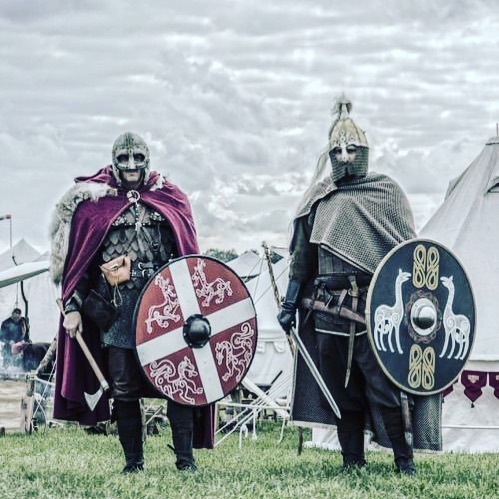
The Vendel period of the history of Sweden and essentially of the whole area of eastern and southern Scandinavia (of course including modern Denmark) is the era before the Viking Age (793 – early 11th century AD). It lasted from the mid-6th century AD to the end of the 8th century and is characterized by princely burials of warlords and powerful warriors with impressive weapons. This historical period and the homonym cultural conglomerate (Vendel culture) took their name from the site Vendel at the historical district Uppland in eastern Sweden, north of Old Uppsala, the ancient centre of the Svear kings. The most characteristic cemeteries were found there. It seems that Uppland (where later the important cities of the Viking age Uppsala and Sigtuna were developed) was very important politically during the Vendel period. The area was rather the political center of the tribe of the Svears (Latin Suiri and Suirones and according to Jordanes: Suehans, Nordic: Svear, Anglo-Saxon: Sweonas, modern Swedes) who had extended to it earlier coming from Svealand, their core territory in the south. Uppland means the upper land, the land in the north. Another very important archaeological site of the Vendel period is Valsgärde, a place about three kilometres north of Old Uppsala. The tombs excavated at Valsgärde gave findings of the same type as those of the Vendel archaeological site. Ulltuna is another important site of this period. The influence of the Vendel culture does not seem to have been strong in western Scandinavia, i.e. modern Norway (Iceland and the Faeroe Isles were not yet inhabited by Scandinavians). https://www.instagram.com/p/B8JPqd2pnoQ/?igshid=eydtdoppy3q0
0 notes
Photo
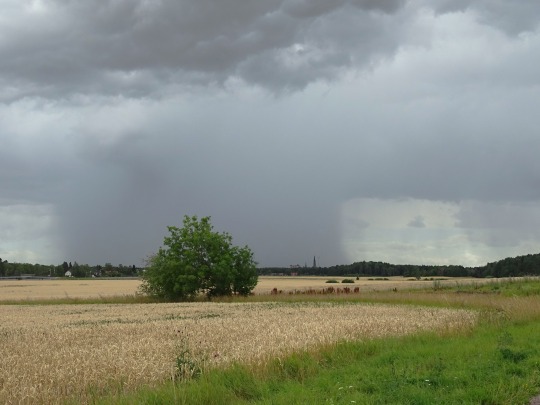

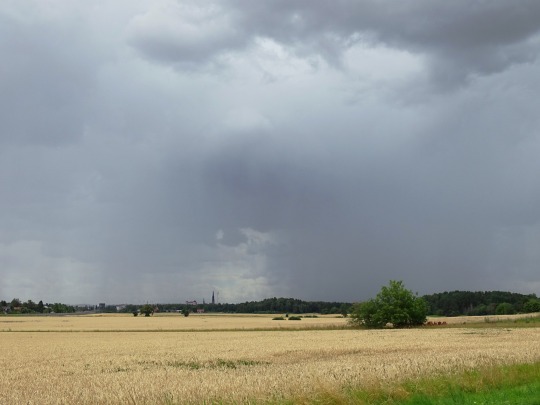
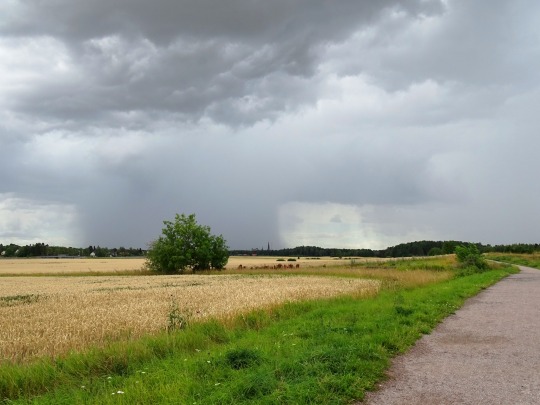
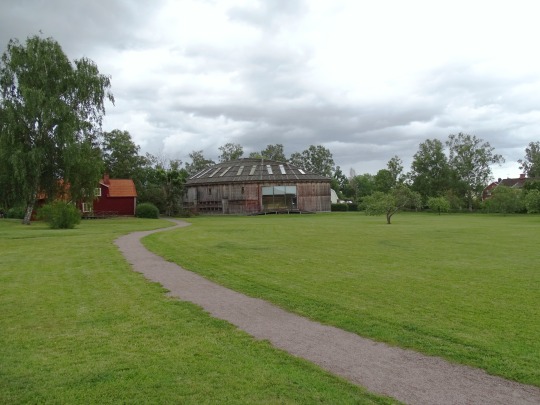
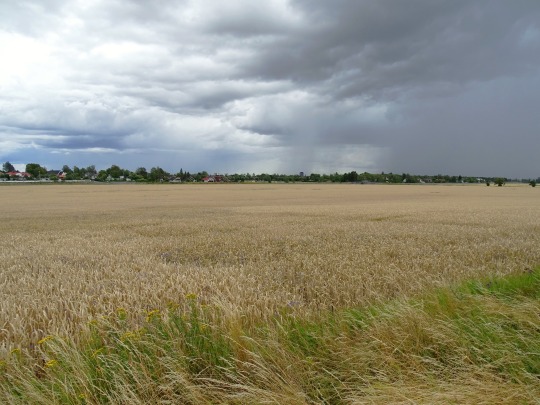
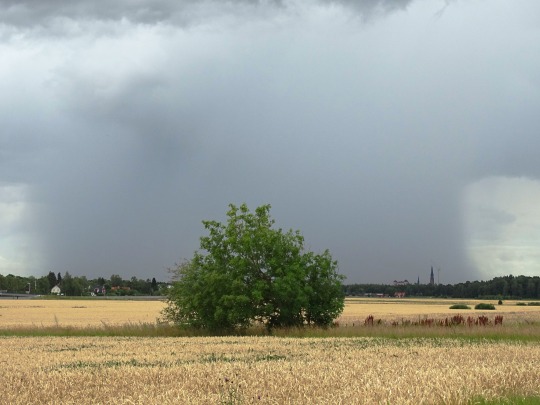
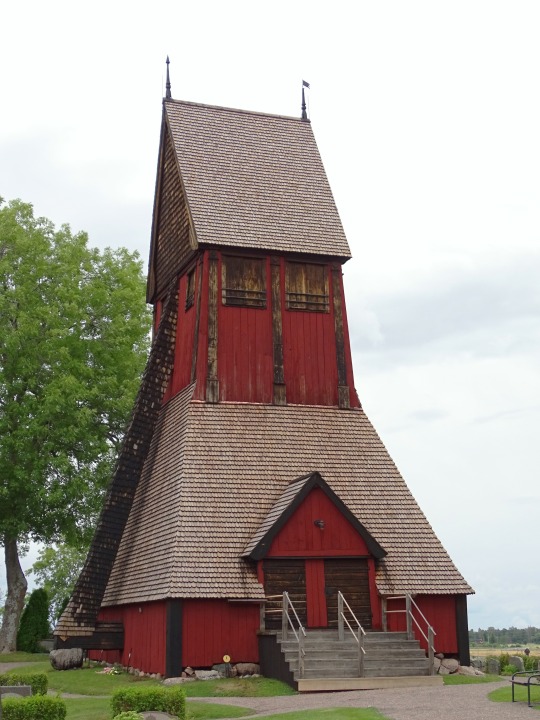
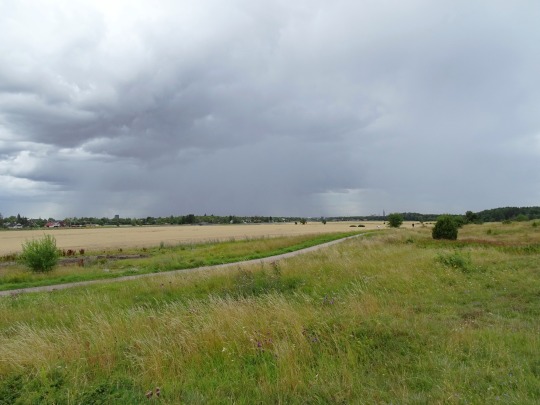
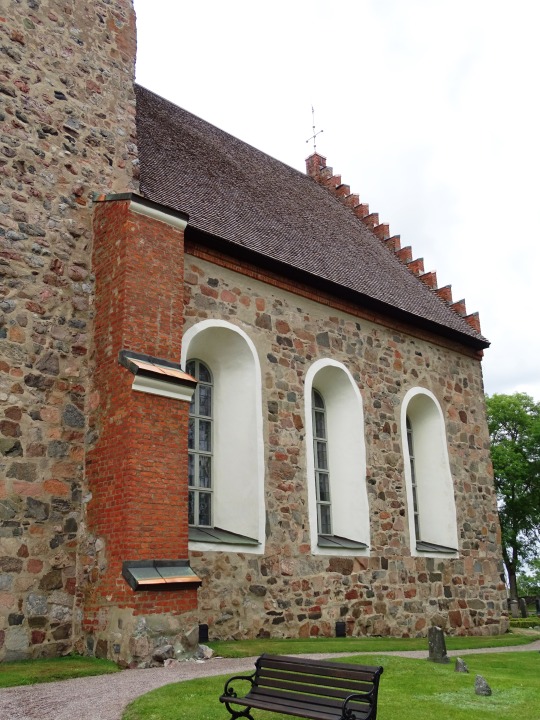
On 16 May 1702 much of Uppsala was destroyed in a large fire.
#Gamla Uppsala Church#Uppsala#destroyed#fire#16 May 1702#travel#320th anniversary#Swedish history#Gamla Uppsala högar#landscape#Gamla Uppsala ancient site#Old Uppsala Archaeological Area#countryside#summer 2020#original photography#wooden belfry#trail#wheat field#nature#flora#tourist attraction#landmark#free admission#architecture#Sweden#Sverige#Scandinavia#Falun red#rain clouds#meadow
4 notes
·
View notes
Text



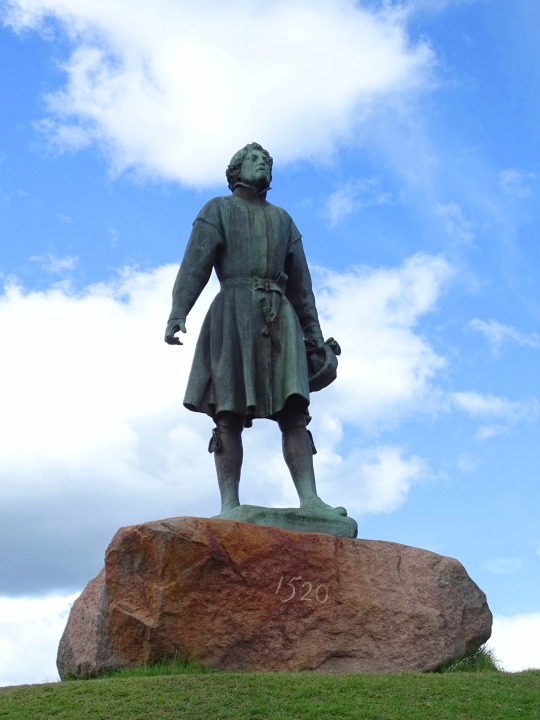



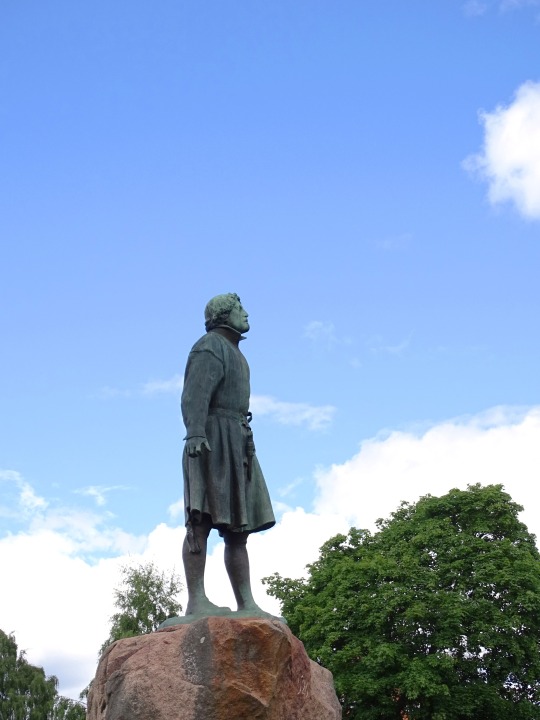
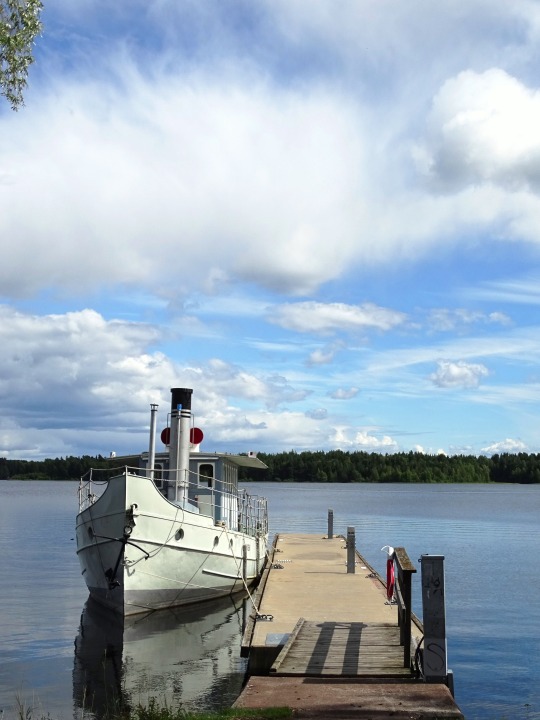


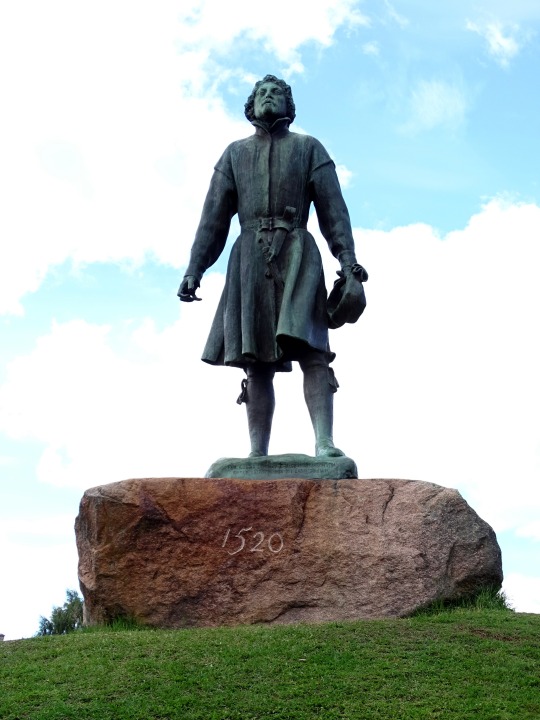

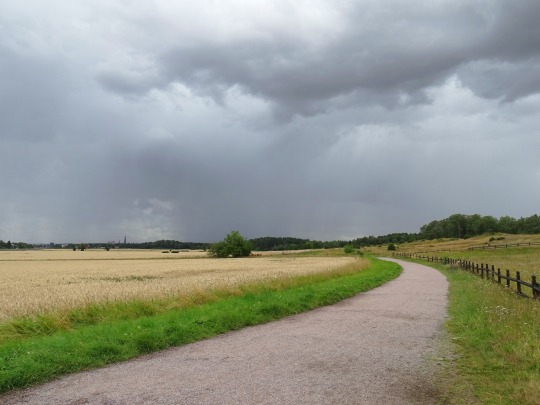

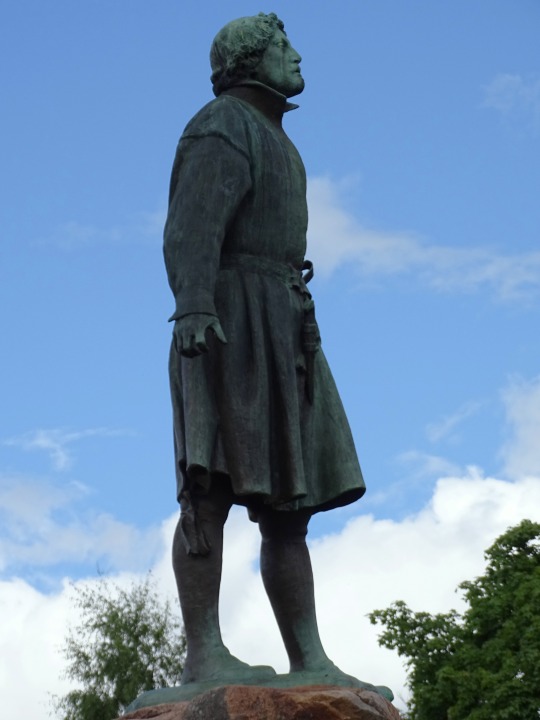



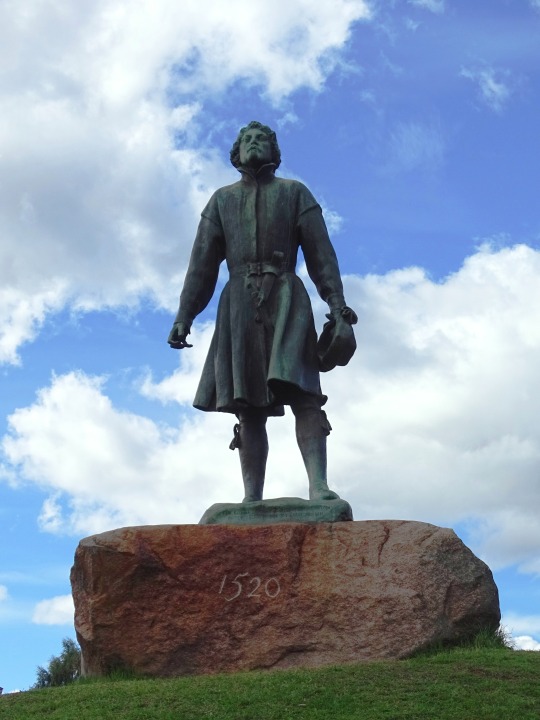

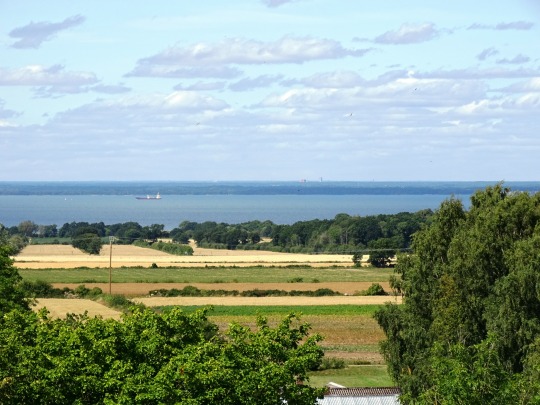

Swedish War of Liberation: Swedish troops defeated a Danish force in the Battle of Västerås on April 29, 1521.
#Gustav Vasa by Anders Zorn#Mora#Lake Siljan#Falun Mine#Kalmar Strait#Baltic Sea#Öland#Sweden#Swedish history#Sverige#summer 2020#travel#original photography#landscape#seascape#cityscape#Old Uppsala Archaeological Area#Långbryggan#Rättvik#Byrums Raukar#Neptune's Fields#Swedish War of Liberation#Battle of Västerås#29 April 1521#tourist attraction#landmark#countryside#Scandinavia#Northern Europe#vacation
0 notes
Photo
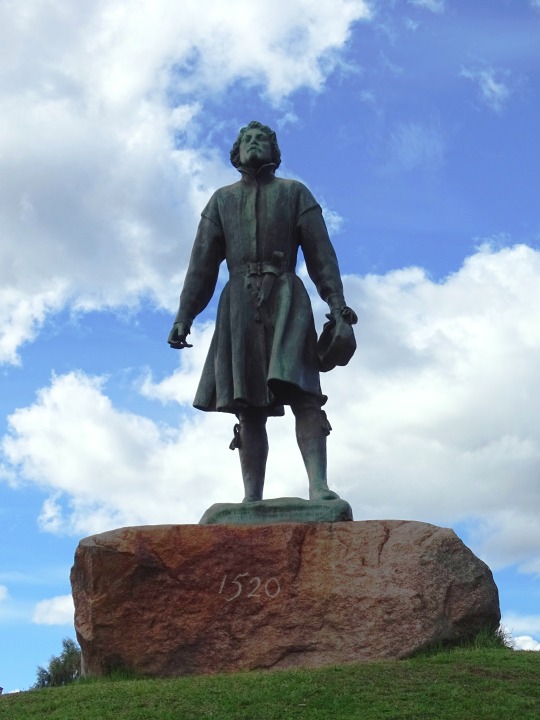




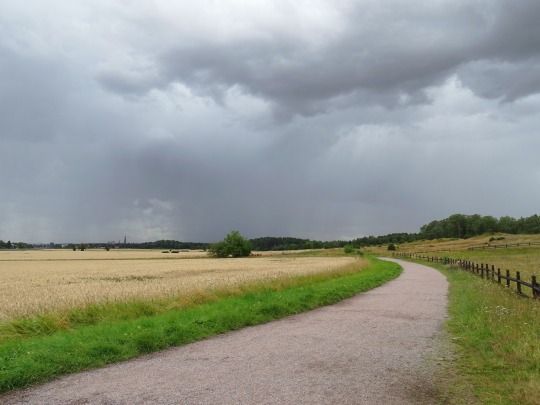




Swedish War of Liberation: Swedish troops defeated a Danish force in the Battle of Västerås on April 29, 1521.
#Gustav Vasa by Anders Zorn#Mora#Lake Siljan#Falun Mine#Kalmar Strait#Baltic Sea#Öland#Sweden#Swedish history#Sverige#summer 2020#travel#original photography#landscape#seascape#cityscape#Old Uppsala Archaeological Area#Långbryggan#Rättvik#Byrums Raukar#Neptune's Fields#Swedish War of Liberation#Battle of Västerås#29 April 1521#tourist attraction#landmark#countryside#Scandinavia#Northern Europe
1 note
·
View note
Photo

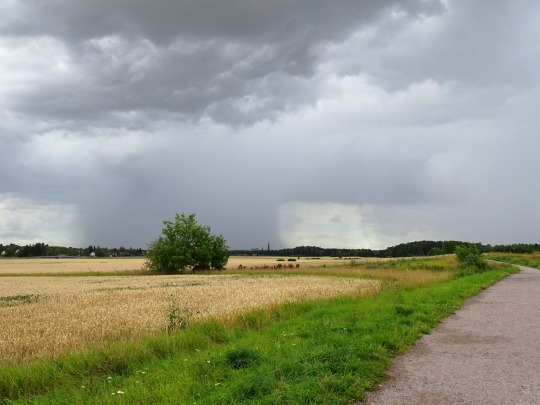

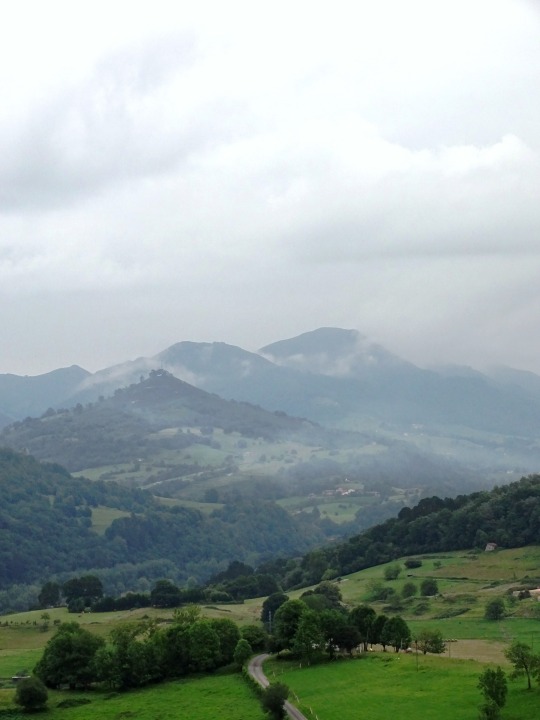

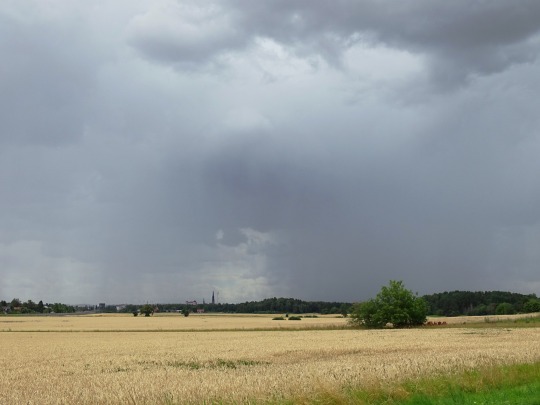



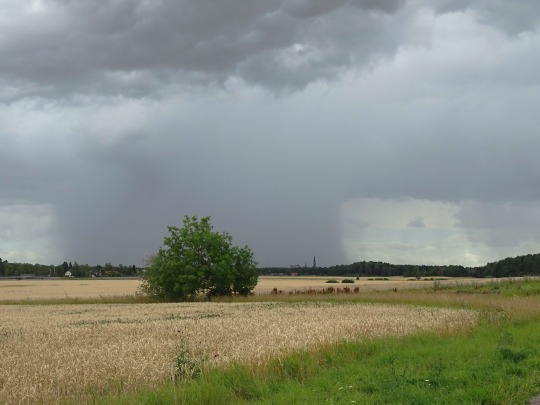
Rain Day
Take a trip to Waynesburg, PA and join the celebration of life-giving rain. Delve deeper into patterns of rainfall and its importance to farming.
Throughout human history, people and cultures all over the world have celebrated rain and it’s life-giving power. All life is dependent on rain, and rain is what keeps our world green and fresh and beautiful. Rain is no less important today than it has been in the past, and now people around the world have Rain Day, a day to celebrate all things wet and wonderful.
You don’t have to be a farmer with your eye on the latest batch of crops to be concerned with rain, and there are many things the ordinary person can do to celebrate. If you’re lucky enough to be somewhere where it rains on Rain Day, you can head outside to dance, sing, or just walk in the rain. If it doesn’t happen to be raining, you can serve up a delicious meal of fresh greens and other things that depend on the rain to grow, and reflect on how lucky we are to live in a rainy world.
Learn about Rain Day
Depending on where in the world you live, rain may be something that you are very much used to! For some people, they see more rain than sun, and this can cause them to become a bit frustrated by it. After all, no one likes being caught in the middle of a massive downpour, do they? However, there are a lot of reasons why we should love rain!
Yes, rain is important for certain industries, but you do not need to be a farmer in order to appreciate rain. Rain can be incredibly soothing. Have you ever laid in bed and listened to the raindrops hitting your window? It is so soothing and relaxing.
In fact, a lot of people play audio of raindrops to try and help them get to sleep at night. If you are someone who has trouble sleeping, give it a try! Rain is widely associated with relaxation. How many of you have used a rainy day as the perfect excuse to have a snug and cozy duvet day?
Rain also gives us the opportunity to show off our stylish rainwear! However, from a more technical and scientific point of view, rain is a vital part of the water cycle. Rain is vital to all life on Earth. Rainfall represents the main way in which water in the skies comes down to earth, providing drinks for animals and plants, recharging the underground aquifers, and filling our rivers and lakes.
When you think about it from this perspective, you see why rain is so critical, and why it is something that should be cherished and celebrated, which is what Rain Day is all about.
History of Rain Day
This is a day that has been celebrated for quite some time now. In fact, Rain Day first took place in the late 1800’s. We have a pharmacist, known as William Allison, to thank for this. He had a drugstore, which was located on High Street, which is the main street in Waynesburg, Pennsylvania. He remarked that it always seemed to be raining on the 29th of July.
Because of this, he decided that we would keep a yearly record of the rainfall on this specific date. After the 1920’s, his brother, Albert Allison, continued to record the results. The late Byron Daily recorded this mystical event, which kept happening every year. It would have remained a local event if it was not for a newsman from the area.
In the 1930’s, John O’Hara decided that he would send stories about Rain Day to other newspapers. Because of this, Rain Day ended up spreading to all corners of the world. Every year, newspapers and other media outlets will often call into Waynesburg to find out if it is raining on this date.
Of course, other people have started to celebrate this date in their own areas by simply learning about rainfall and the importance of it, as well as spreading this awareness.
How to celebrate Rain Day
There are a number of different ways that you can celebrate Rain Day. If you happen to live near Waynesburg, you will definitely want to consider making a trip to the town and celebrating. There are bound to be a number of different events that are going on.
If you don’t live anywhere near this part of the world, this does not mean you cannot celebrate. If it is raining in your area, why not do a bit of dancing in the rain? There is something incredibly invigorating about this!
Why not treat yourself to a new jacket on Rain Day? There are so many different options to choose from. Biker jackets, macs, caps, blazers, swing coats, fur jackets, bomber jackets, parkas… to name a mere few! And that is without even mentioning the various materials, colours and designs on the Internet.
Of course, the choice is a great thing, but it can definitely make it difficult when it comes to buying a jacket or coat. You find yourself torn between an array of gorgeous styles. The last thing you want to do is make a quick-fire purchase and then end up with a jacket you never wear because it does not protect you from the rain outside!
Before you go for the out-there pink patterned mac, you need to ensure you have your wardrobe staple, i.e. something that goes with most of your outfits and you can wear again and again. Colour is always an important consideration. Classic colors, such as navy, cream and black, never go out of fashion.
You can’t go wrong with one of these shades. That’s not to say you can’t go for a vibrant or bold color! Red raincoats have been at the height of fashion for many years – the perfect way to brighten up a winter day.
You can also spend Rain Day learning more about rain and the importance of it. Thanks to the Internet, it is easier than it ever has been to get our hands on information and learn more about the world. You can find out about parts of the world that have the most rain, as well as those parts of the world that barely get any rain at all.
There are also a lot of interesting facts about rain as well, some of which may surprise you. For example, did you know that there is such a thing as phantom rain? This refers to raindrops that do not reach the ground.
You can also spend some time learning about how rainfall is predicted from the different types of clouds. It really is a fascinating subject that is worth delving deeper into. Why not share some of your knowledge with your friends, family members, and followers on social media too? We are sure that they will be fascinated to learn more about your findings, and this will help to spread awareness about the day in general as well, which is always a good thing.
Source
#Lake Böles-Noran#Central Park#New York City#Sweden#vacatioh#travel#Old Uppsala Archaeological Area#rain clouds#landscape#countryside#USA#original photography#cityscape#Baltic Sea#RainDay#Rain Day#29 July#flora#architecture#Picos de Europa#Cangas de Onís#Cantabrian Mountains#Spain#summer 2020#2021#tourist attraction#landmark
1 note
·
View note
Photo

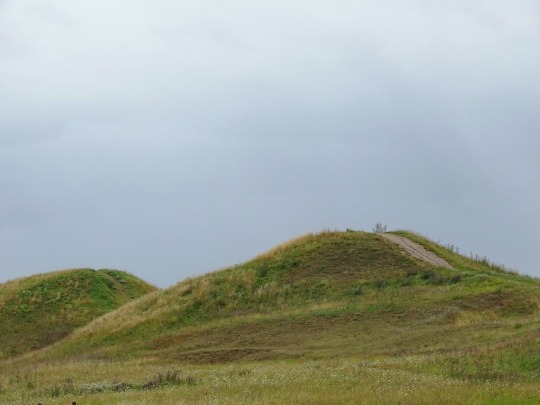
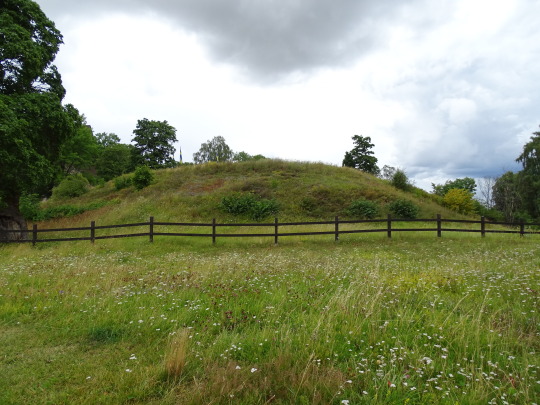
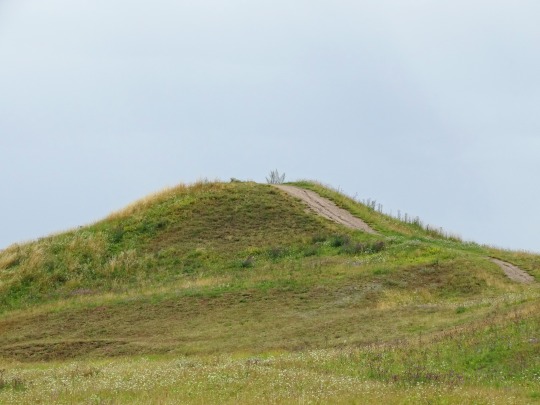
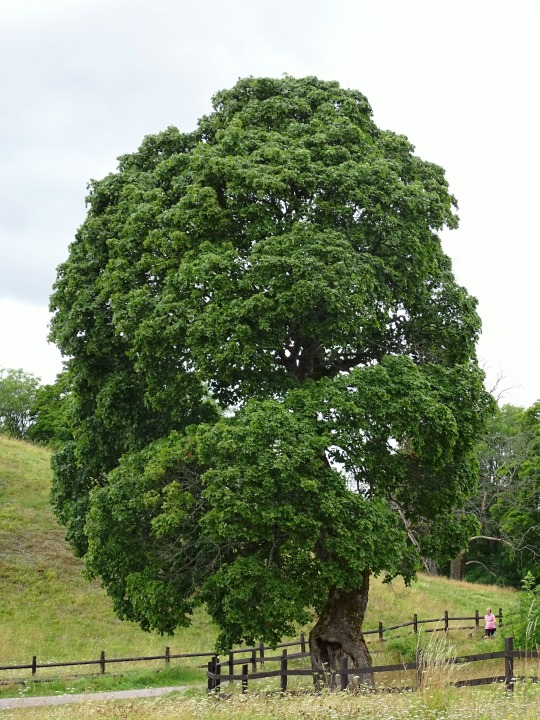
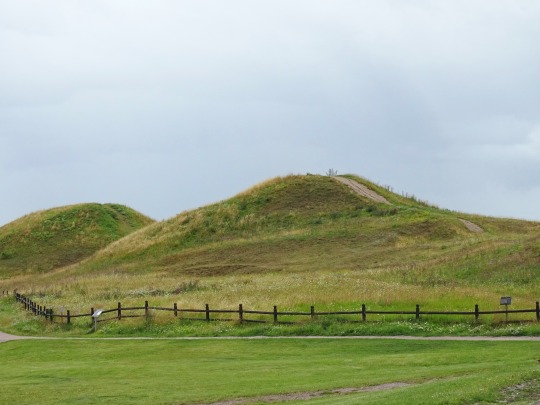
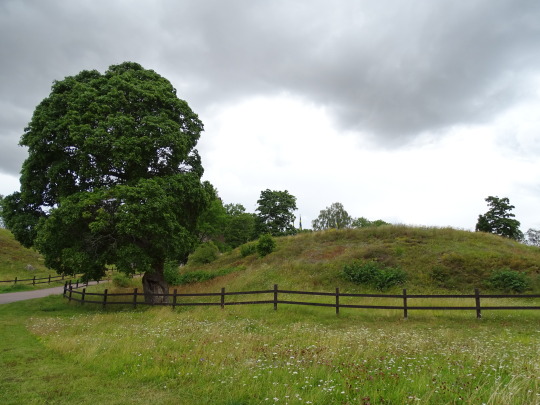



Old Uppsala Archaeological Area, Sweden (No. 1)
It is a testimony to the sanctity of the location in the mindset of followers of medieval Norse religion that Gamla Uppsala was the last stronghold of pre-Christian, Norse Germanic kingship. During the 1070s and 1080 there appears to have been a renaissance of Norse religion with the magnificent Temple at Uppsala described in a contested account through an eye-witness by Adam of Bremen. Adam of Bremen relates of the Uppsala of the 1070s and describes it as a pagan cult centre with the enormous Temple at Uppsala containing wooden statues of Odin, Thor and Freyr.
Sometime in the 1080s the Christian king Ingi was exiled for refusing to perform the sacrifices. Instead Blot-Sweyn was elected, but he was killed by Ingi who could then reclaim his throne.
Its great importance in Swedish tradition led to the location of Sweden's first Archbishopric in Gamla Uppsala in 1164. In practice, however, it had lost its strategic importance when it gradually lost ready access to navigable waters as the land rose owing to the constant post-glacial rebound.
Source: Wikipedia
#Old Uppsala Archaeological Area#Gamla Uppsala#Swedish history#landscape#countryside#Uppsala#Uppland#Gamla Uppsala högar#nature#flora#free admission#Old Uppsala Ancient Monument Area#Gamla Uppsala ancient site#King's Mounds#Nordic Bronze Age#Iron Age#Viking Age#Kungshögarna#wildflower#blooming#fence#Sweden#Sverige#tourist attraction#summer 2020#travel#landmark#vacation#hills#Scandinavia
36 notes
·
View notes
Photo
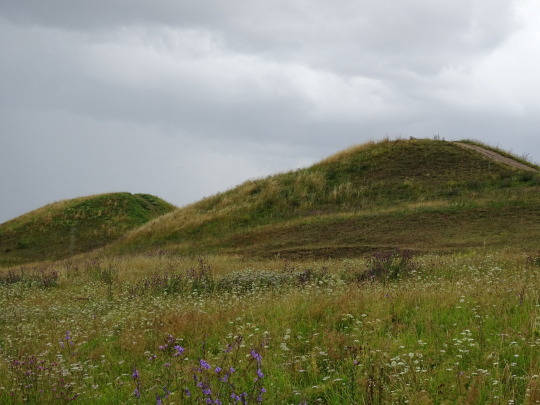
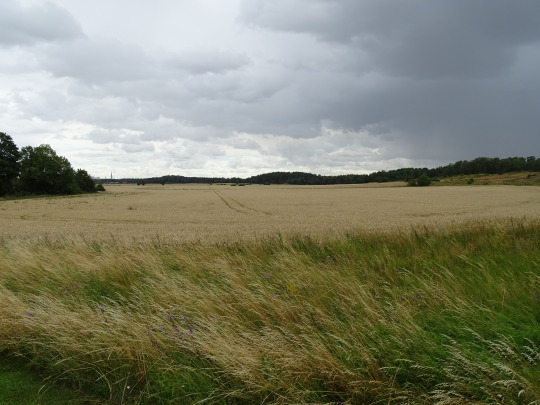
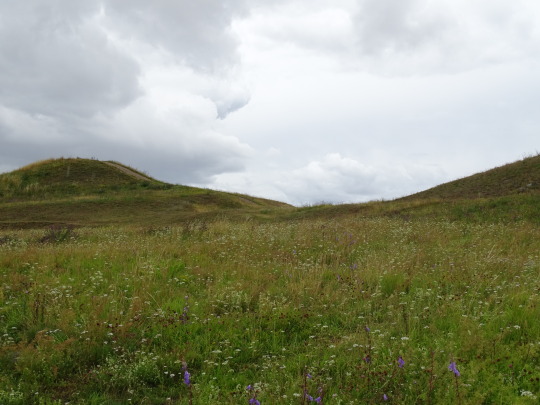
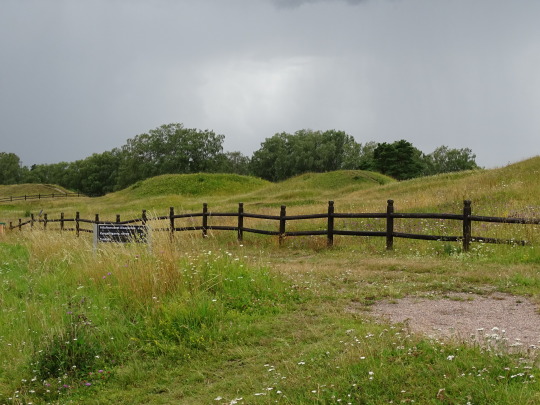
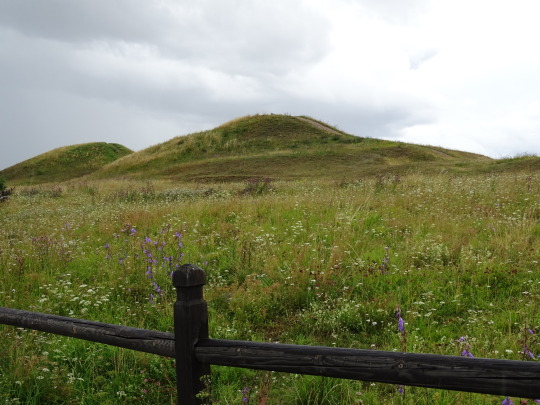
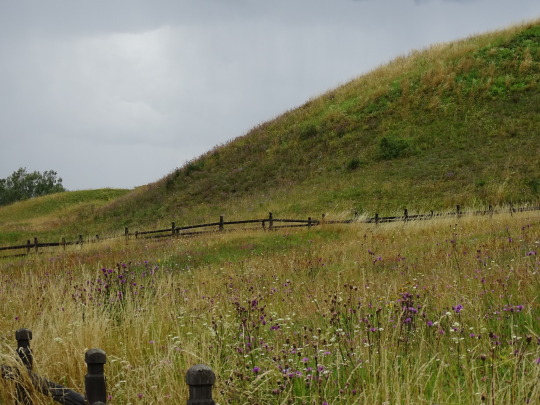

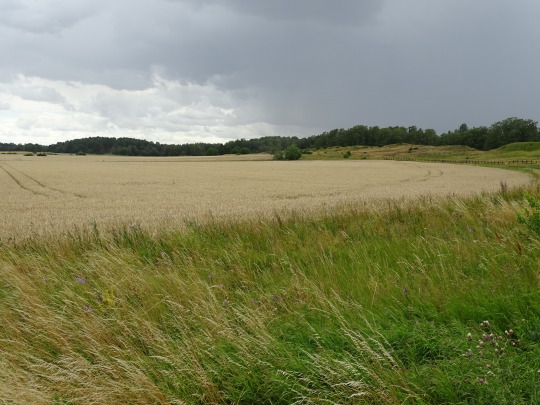
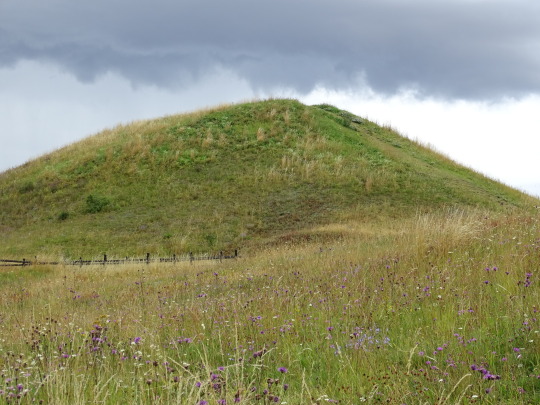
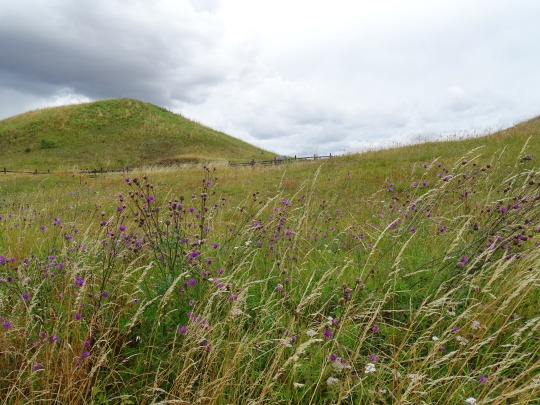
Clouds (No. 326)
Old Uppsala Archaeological Area, Sweden
#Old Uppsala Archaeological Area#fields#meadow#trail#fence#flora#wildflower#wheat field#overcast#sky#rain#clouds#Gamla Uppsala#Uppland#Uppsala#Royal Mounds#Viking Age#Iron Age#landscape#countryside#tourist attraction#landmark#Sweden#Sverige#Scandinavia#Northern Europe#outdoors
228 notes
·
View notes
Photo
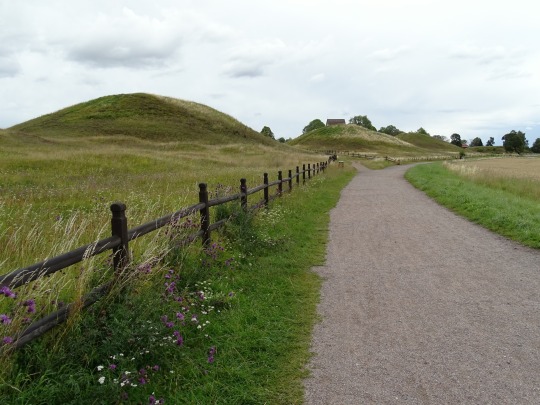

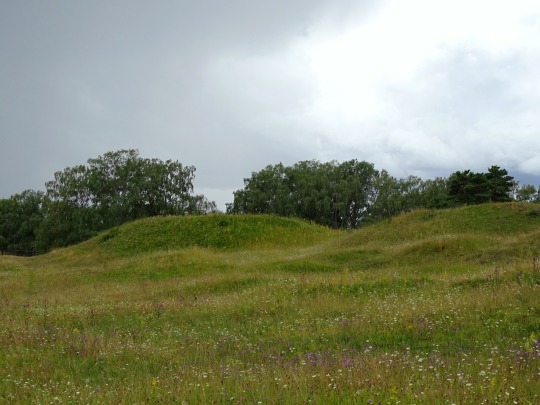
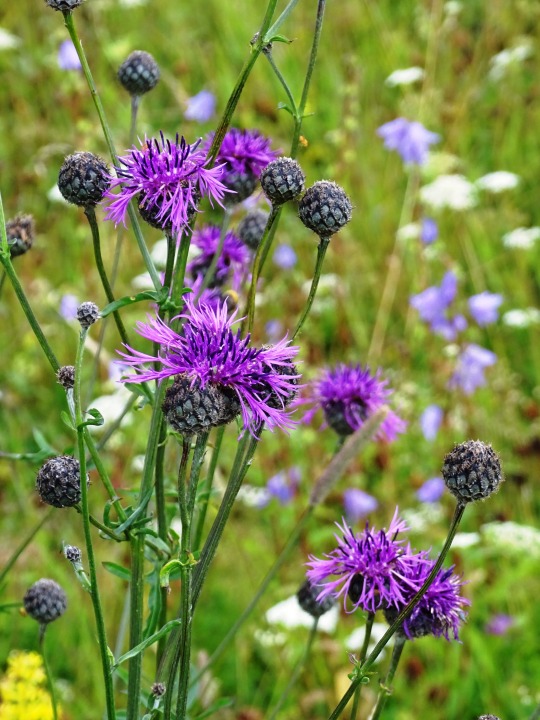
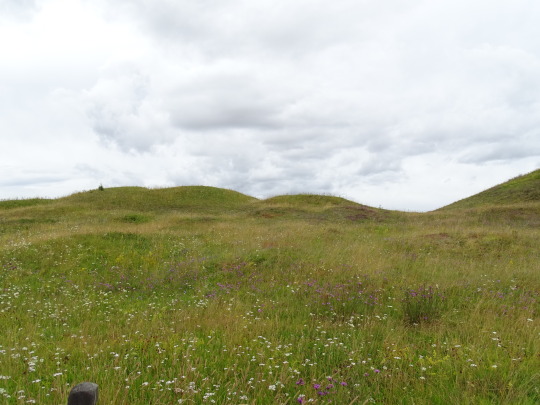

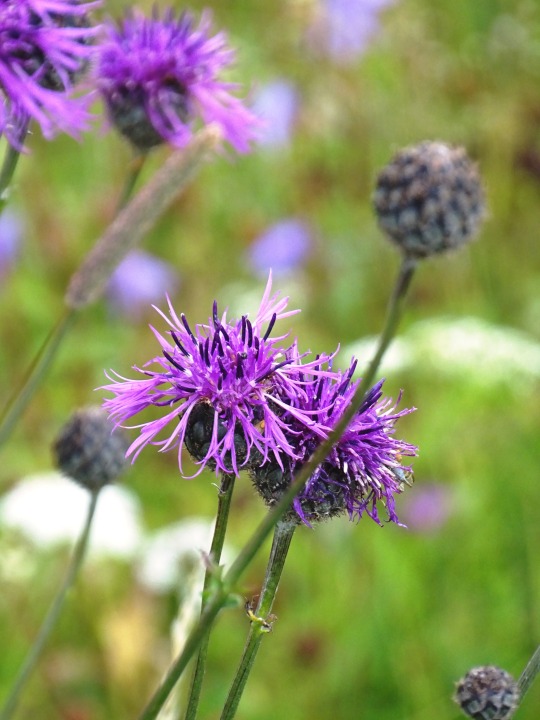
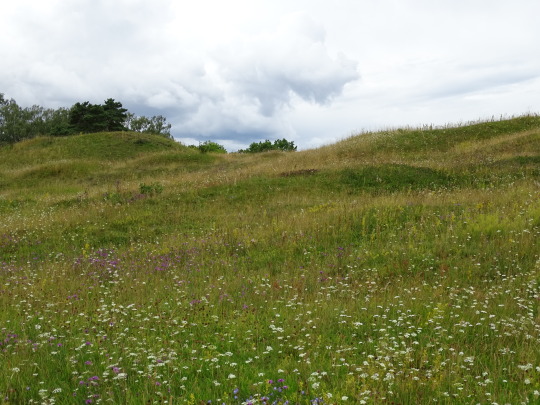

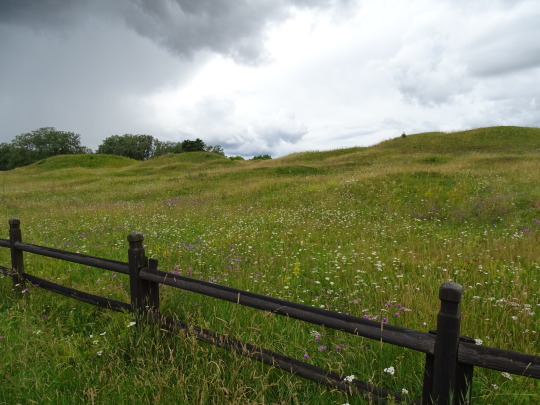
Old Uppsala Archaeological Area, Sweden (No. 5)
In the 1830s, some scholars claimed that the mounds were pure natural formations and not barrows. This affront to ancient Swedish national symbols could not be accepted by the future Swedish king Karl XV and in order to remove any doubt, he decided to start an excavation.
The task was given to Bror Emil Hildebrand, the director-general of the National Archives. In 1846, he undertook the excavation of the nine-metres-tall (30 ft) Eastern mound with the hope of finding the grave of a Swedish king of old.
Source: Wikipedia
#Old Uppsala Archaeological Area#Old Uppsala Ancient Monument Area#Sverige#Gamla Uppsala högar#King's Mounds#Royal Mounds#trail#fence#nature#wildflower#field#hills#landscape#countryside#dark clouds#rainy#travel#vacation#summer 2020#original photography#free admission#landmark#tourist attraction#flora#tree#overcast#Sweden#Scandinavia#Northern Europe#Uppland
9 notes
·
View notes
Photo
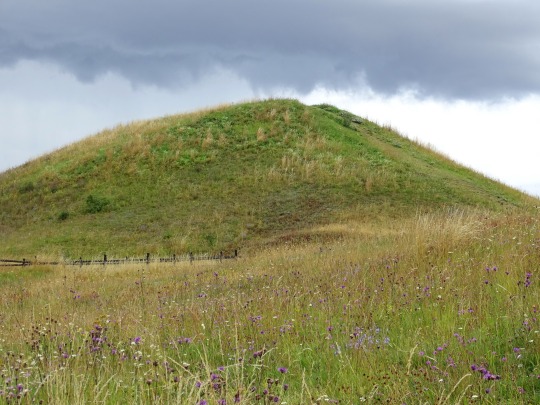
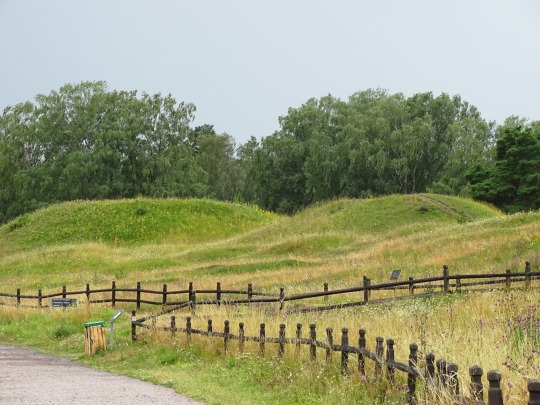


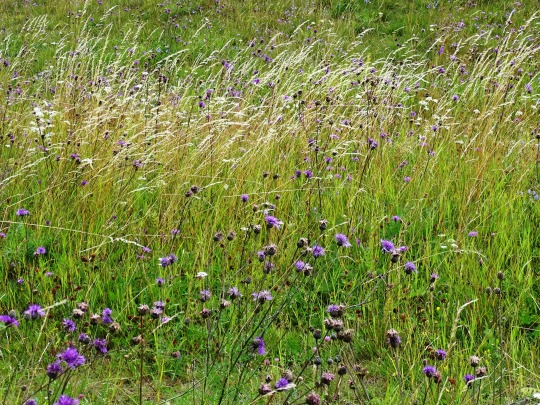
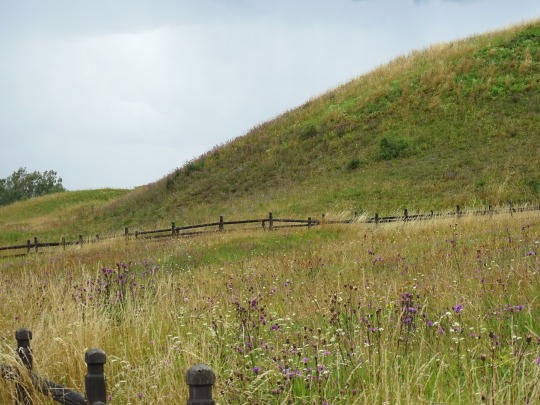
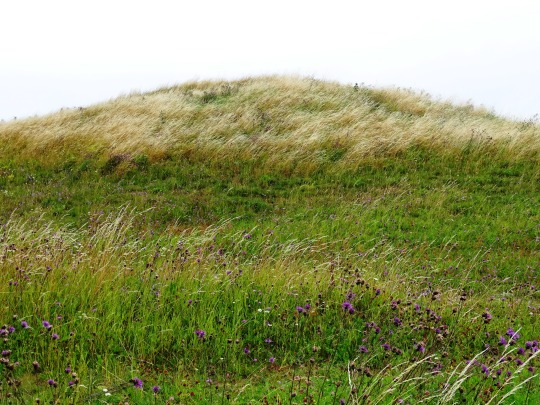
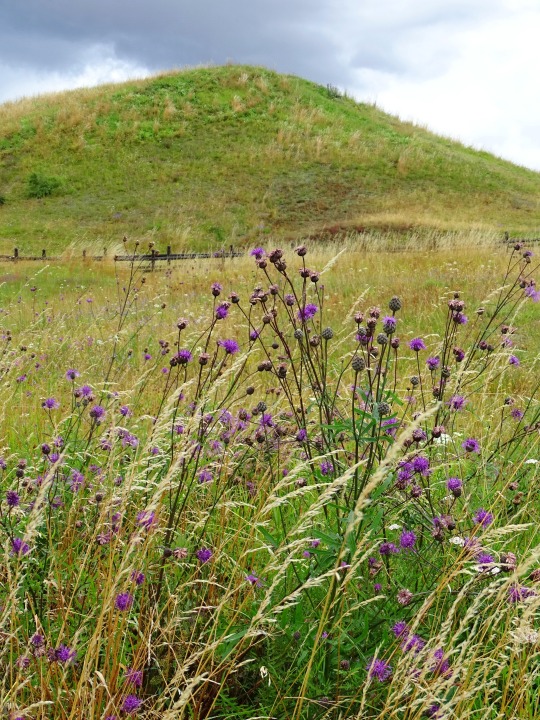
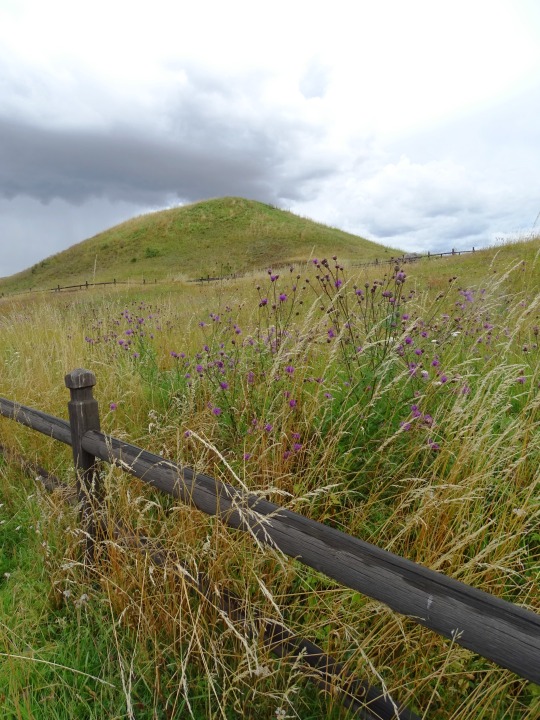
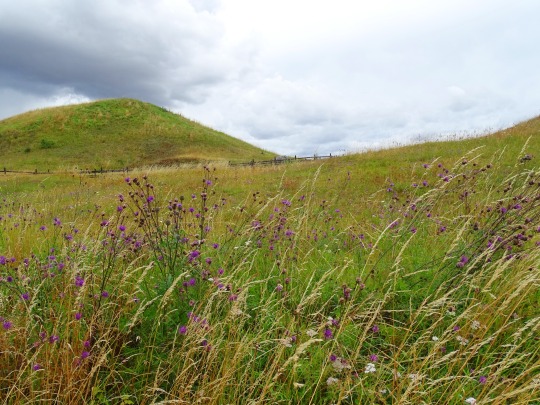
Old Uppsala Archaeological Area, Sweden (No. 3)
The Royal Mounds (Swedish: Kungshögarna) is the name of the three large barrows located in Gamla Uppsala. According to folklore, the three gods Thor, Oden and Freyr would be at rest in Kungshögarna or Uppsala högar (from the Old Norse word Haugr meaning mound or barrow; cognate English Howe). In the 19th and 20th centuries, they were speculated to hold the remains of three kings of the semi-legendary House of Ynglings and were thus known as Aun's Mound, Adils's Mound and Egil's Mound. Today their geographical locations are used instead and they are called the Eastern mound, Middle Mound and Western Mound.
They are dated to the 5th and 6th centuries. As Sweden's oldest national symbols they are even depicted on the covers of books about the Swedish national identity. In the 6th century, Gamla Uppsala was the location of royal burials. The location was chosen carefully and in order to make them majestic. The tumuli were constructed on top of the ridge.
Source: Wikipedia
#Old Uppsala Archaeological Area#Gamla Uppsala ancient site#Gamla Uppsala#Gamla Uppsala högar#Royal Mounds#King's Mounds#Swedish history#travel#summer 2020#landscape#countryside#tourist attraction#landmark#free admission#Uppland#flora#wildflower#grass#fence#Sweden#Sverige#dark clouds#Scandinavia#Northern Europe#original photography#Kungshögarna#Uppsala högar#vacation#hills#trail
8 notes
·
View notes
Photo
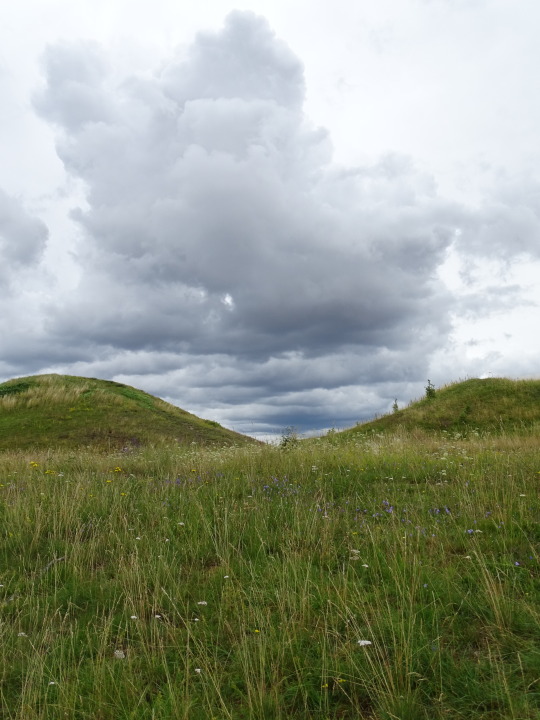

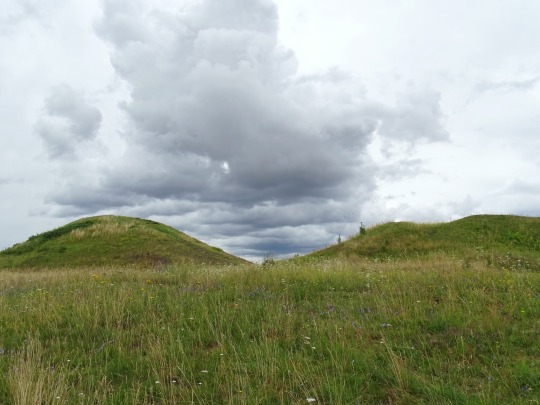
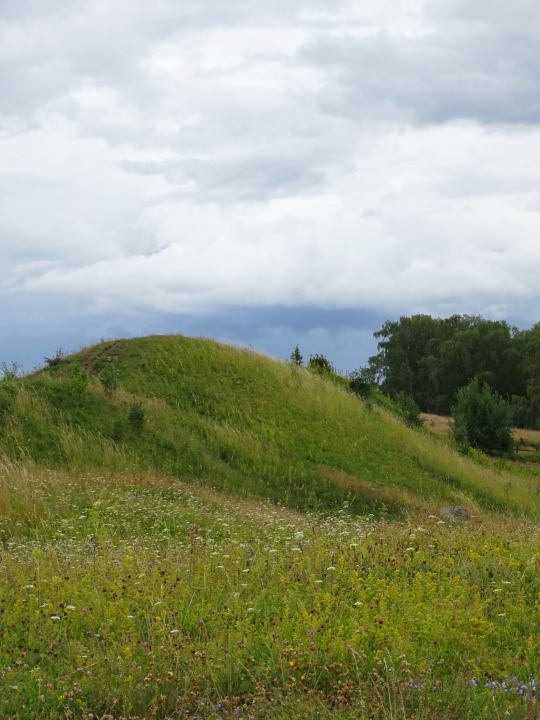
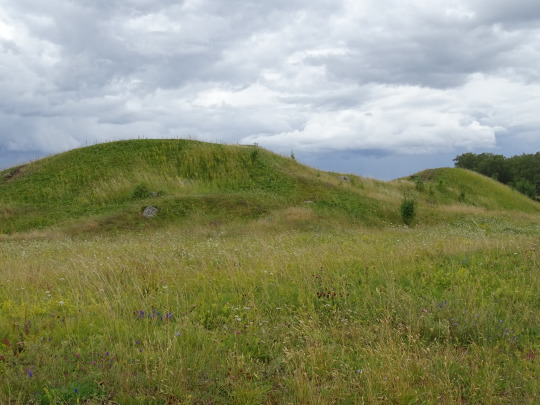

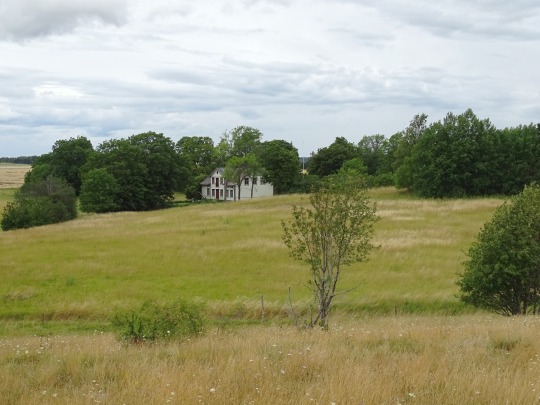

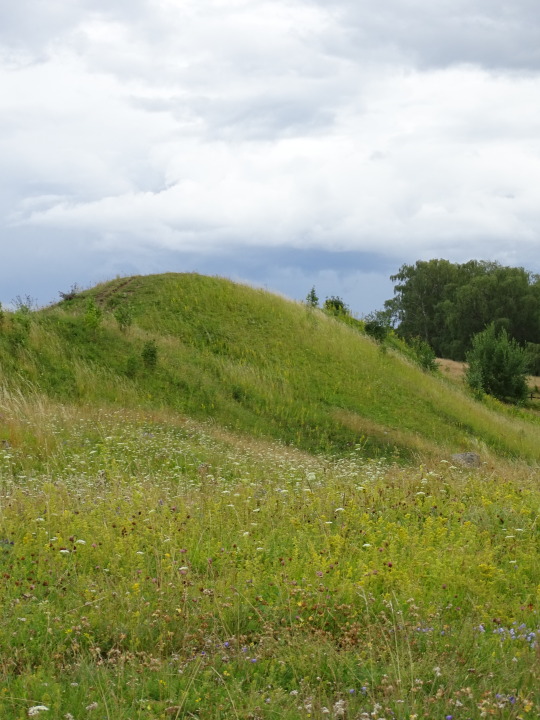
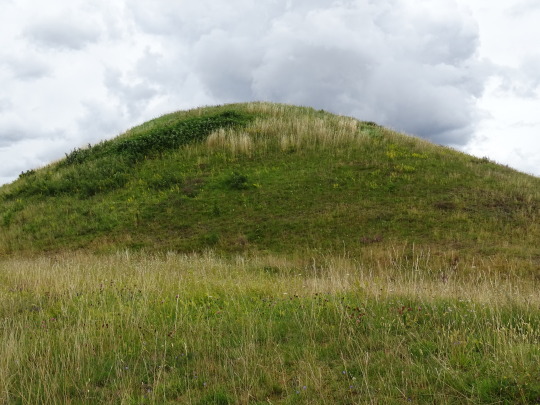
Old Uppsala Archaeological Area, Sweden (No. 10)
The East mound, the largest of the monuments, was excavated in 1847.
Various interpretations as to dating exist. The archaeologist and professor Sune Lindqvist (1887-1976) suggested that it was erected around 500 AD, or in the early 6th century (The Migration Period), while the archaeologist John Ljungkvist places it around 550-600 AD (The Vendel Period).
The east mound is around 9 metres tall and its oval shape measures around 75 by 55 metres.
At the mounds base was a stone cairn covering a burial urn with burnt bone.
Remains of two persons
So who was buried there?
One interpretation is that it is a double grave, with two individuals. One was a boy, only 10 to 14 years old at the time of death, the other was a woman.
The reason little can be made of the osteology material is in part that the bodies were cremated, in part the most of the bone material was reinterred after excavation.
Gold and glass
Since the dead were cremated on a pyre along with the grave goods, artefacts have largely been destroyed by the fierce heat.
Examples of what nevertheless could be discerned were: ·
Thin bronze plate, possibly originally mounted on the kind of helmet known from the bout burials in Vendel and Valsgärde.
Bone gaming pieces
Remains of glass beakers
A bone comb
A small bone duck, which possibly once festooned the top of a bone needle.
Iron rivets, possibly from a casket or chest
Whetstones for sharpening knives
A object which may have been a makeup pallet
Fittings possibly from a drinking horn
Three gold objects: a piece of gold plate with filigree (thin strands and granules of gold), a piece of gold plate with animal ornaments and fittings for garnets. All three objects may have festooned a so-called scramasax, a single edge fighting knife.
Burnt and unburnt bone from a least three dogs, a hunting falcon, cattle and sheep
Bone from bear claws, suggesting that the deceased was laid out on a bear pelt.
Source
#Old Uppsala Archaeological Area#Old Uppsala Ancient Monument Area#Sverige#Gamla Uppsala högar#King's Mounds#Royal Mounds#archaeology#travel#Swedish history#Sweden#summer 2020#original photography#vacation#landscape#countryside#free admission#Uppland#Iron Age#Viking Age#flora#nature#wildflower#dark clouds#Northern Europe#Scandinavia
3 notes
·
View notes
Photo
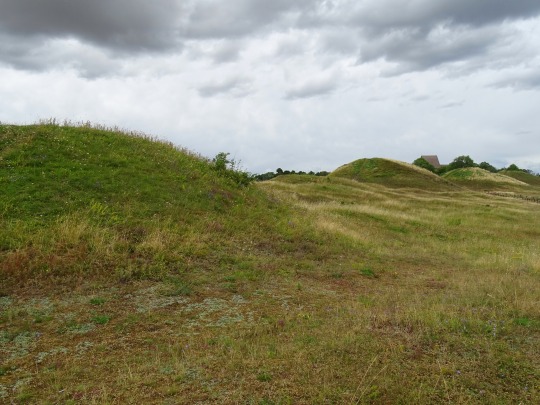
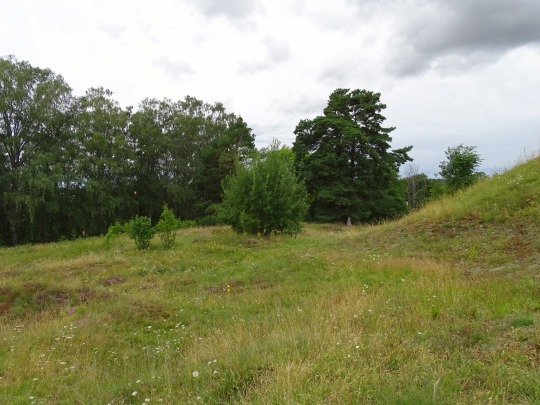


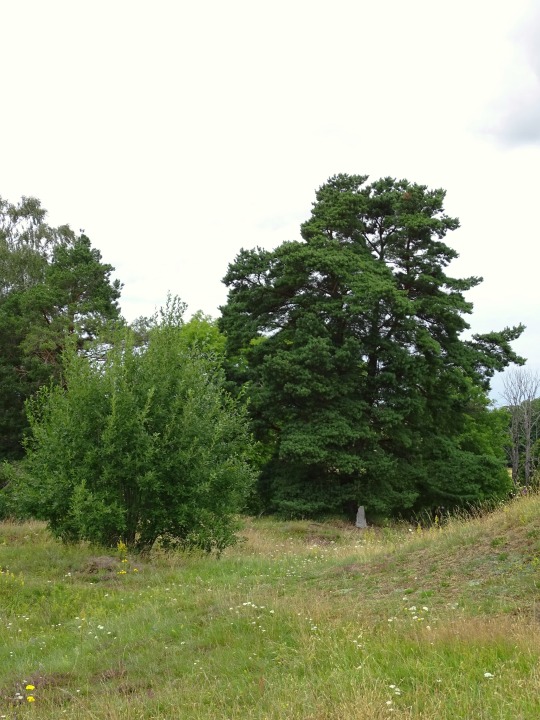
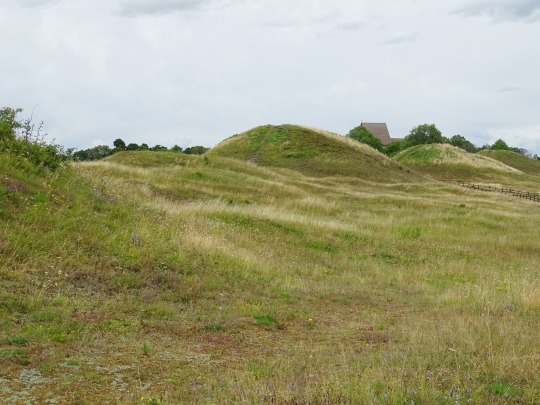
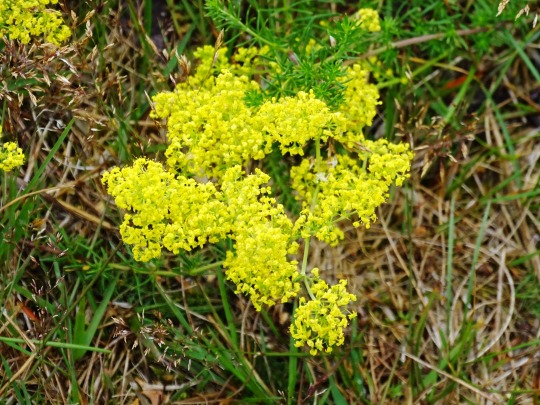


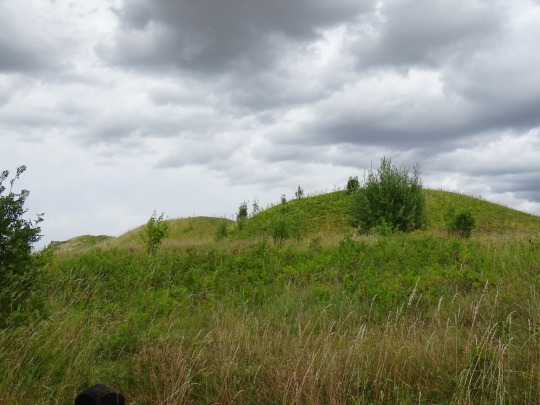
Old Uppsala Archaeological Area, Sweden (No. 8)
In 1874, Hildebrand started an excavation of the western mound and opened an enormous shaft right into the cairn in the centre of the mound. Under the cobble stones, there were the charred remains of the funeral fire.
In the western mound were found the remains of a man and animals, probably for food during the journey. The remains of a warrior's equipment were found. Luxurious weapons and other objects, both domestic and imported, show that the buried man was very powerful. These remains include a Frankish sword adorned with gold and garnets and a board game with Roman pawns of ivory. He was dressed in a costly suit made of Frankish cloth with golden threads, and he wore a belt with a sumptuous buckle. There were four cameos from the Middle East which were probably part of a casket. The finds show the distant contacts of the people of Uppland in the 6th century.
Source: Wikipedia
#Old Uppsala Archaeological Area#Old Uppsala Ancient Monument Area#Sweden#Gamla Uppsala högar#Gamla Uppsala#King's Mounds#Royal Mounds#landscape#counryside#archaeology#Iron Age#Viking Age#flora#overcast#free admission#tourist attraction#landmark#Uppland#summer 2020#Sverige#nature#grass#meadow#wildflower#fence#dark clouds#Northern Europe#Scandinavia
2 notes
·
View notes
Photo

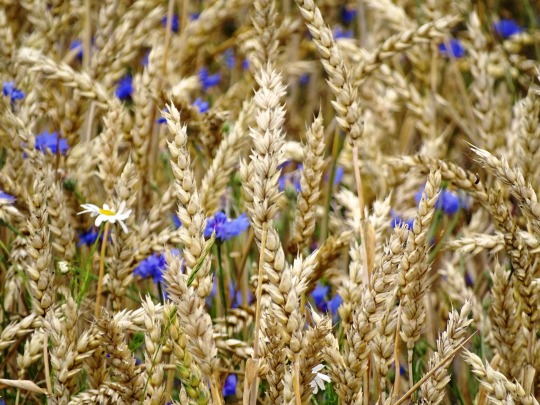
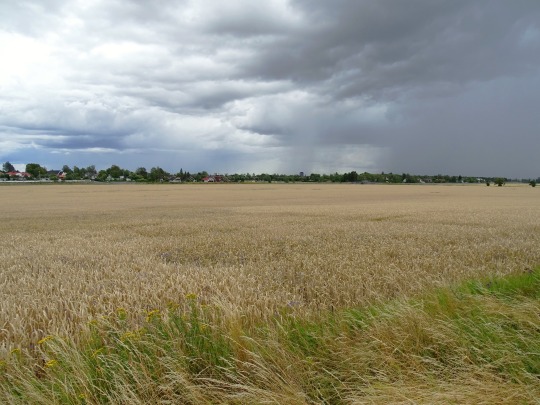
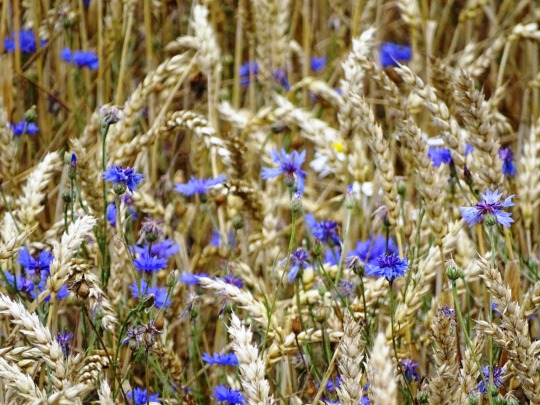




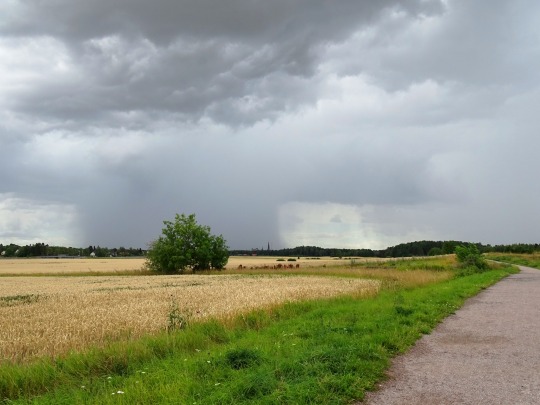

Old Uppsala Archaeological Area, Sweden (No. 6)
Centaurea cyanus, commonly known as cornflower or bachelor's button, is an annual flowering plant in the family Asteraceae native to Europe. In the past, it often grew as a weed in cornfields (in the broad sense of "corn", referring to grains, such as wheat, barley, rye, or oats), hence its name. It is now endangered in its native habitat by agricultural intensification, particularly by over-use of herbicides. However, Centaurea cyanus is now also naturalised in many other parts of the world, including North America and parts of Australia through introduction as an ornamental plant in gardens and as a seed contaminant in crop seeds.
Centaurea cyanus is an annual plant growing to 40–90 cm tall, with grey-green branched stems. The leaves are lanceolate and 1–4 cm long. The flowers are most commonly an intense blue colour and arranged in flowerheads (capitula) of 1.5–3 cm diameter, with a ring of a few large, spreading ray florets surrounding a central cluster of disc florets. The blue pigment is protocyanin, which in roses is red. Fruits are approx. 3.5 mm long with 2–3 mm long pappus bristles. It flowers all summer.
Source: Wikipedia
#Centaurea cyanus#cornflower#bachelor's button#wheat field#wheat#sky#overcast#trail#dark clouds#rain clouds#nature#wildflower#flora#blooming#tree#Old Uppsala Archaeological Area#summer 2021#Sweden#Old Uppsala Ancient Monument Area#meadow#tourist attraction#landmark#free admission#Sverige#Northern Europe#Uppland#close up
4 notes
·
View notes
Photo
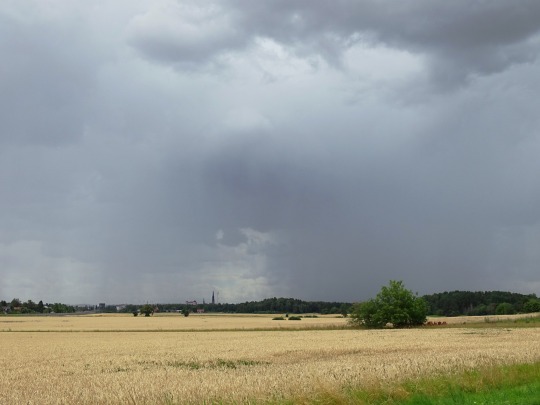



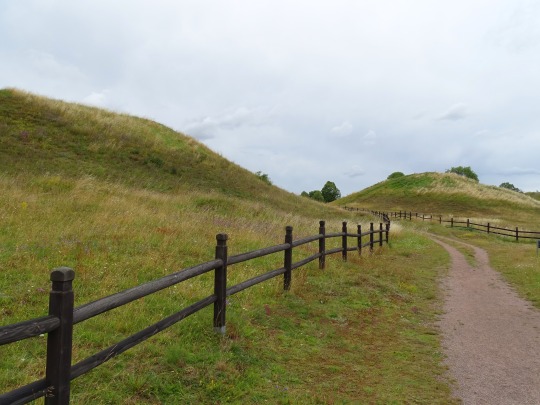
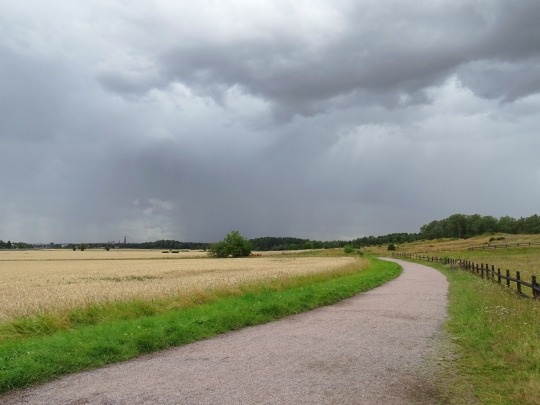
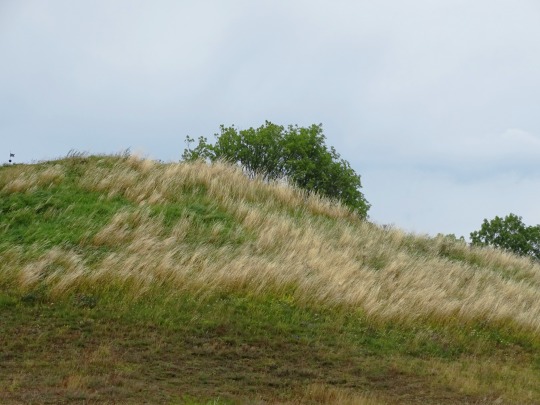
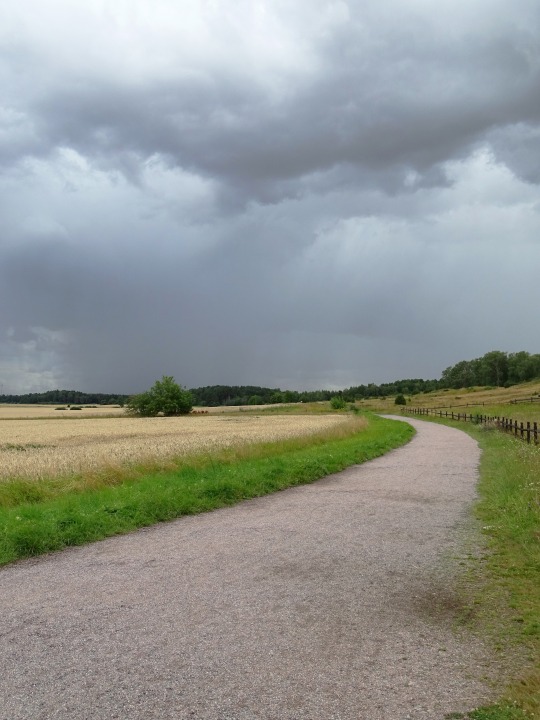
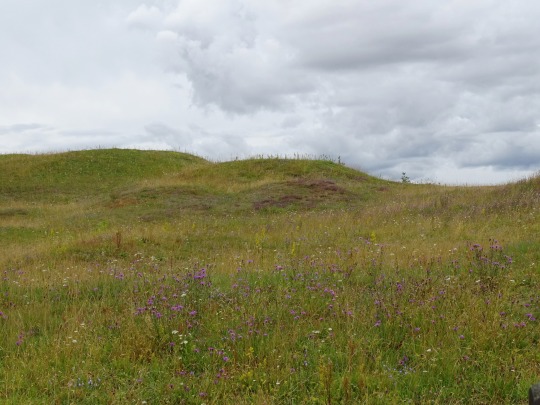
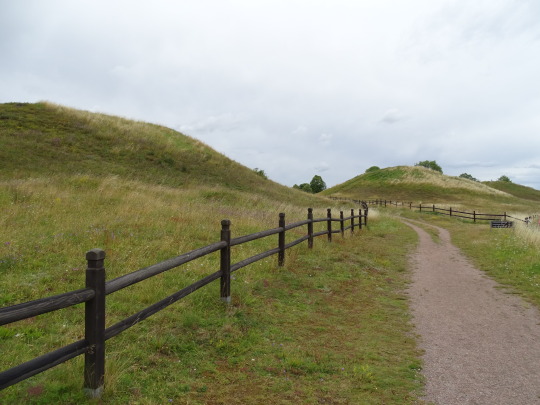
Old Uppsala Archaeological Area, Sweden (No. 4)
By burning the dead king and his armour, he was moved to Valhalla by the consuming force of the fire. The fire could reach temperatures of 1500 °C. The remains were covered with cobblestones and then a layer of gravel and sand and finally a thin layer of turf.
Thus he (Odin) established by law that all dead men should be burned, and their belongings laid with them upon the pile, and the ashes be cast into the sea or buried in the earth. Thus, said he, every one will come to Valhalla with the riches he had with him upon the pile; and he would also enjoy whatever he himself had buried in the earth. For men of consequence a mound should be raised to their memory, and for all other warriors who had been distinguished for manhood a standing stone; which custom remained long after Odin's time. [...] It was their faith that the higher the smoke arose in the air, the higher he would be raised whose pile it was; and the richer he would be, the more property that was consumed with him.
Source: Wikipedia
#Old Uppsala Archaeological Area#Gamla Uppsala högar#Uppland#Sweden#Old Uppsala Ancient Monument Area#Gamla Uppsala#King's Mounds#Sverige#Royal Mounds#landscape#countryside#Swedish history#archaeology#trail#free admission#original photography#summer 2020#tourist attraction#landmark#flora#wildflower#dark clouds#rain#grass#nature
3 notes
·
View notes
Photo

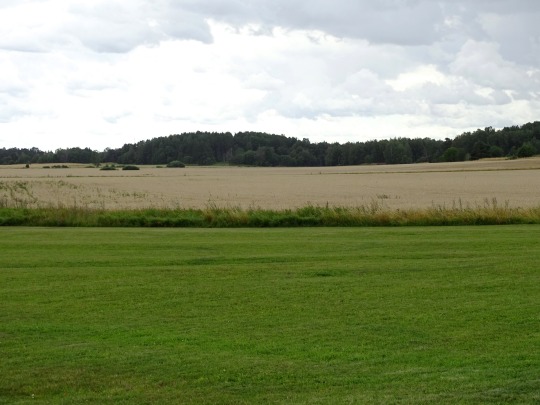
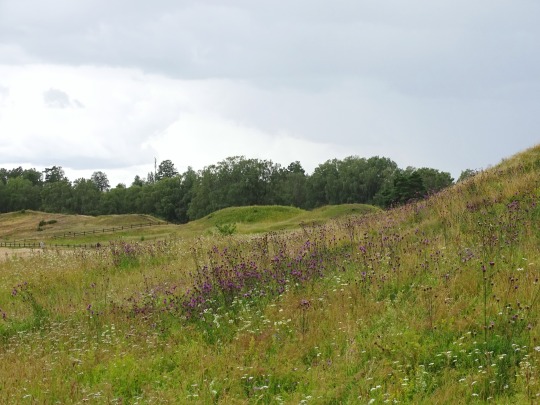
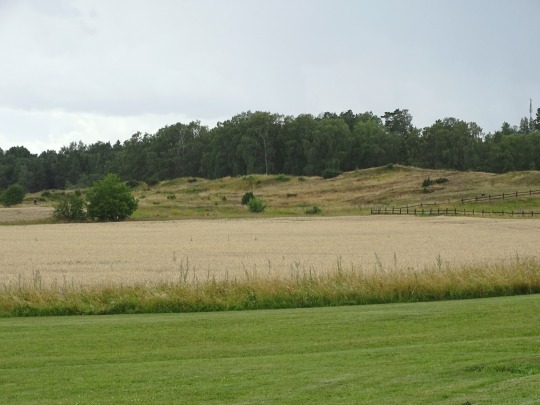

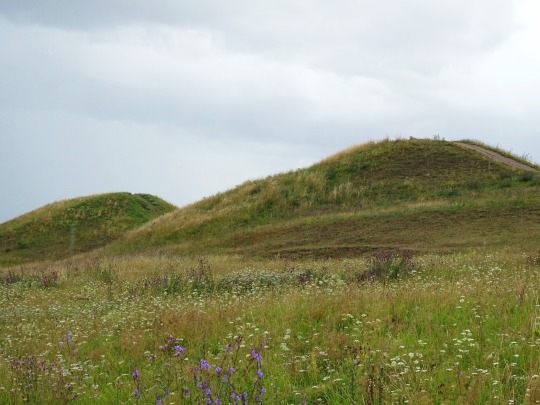
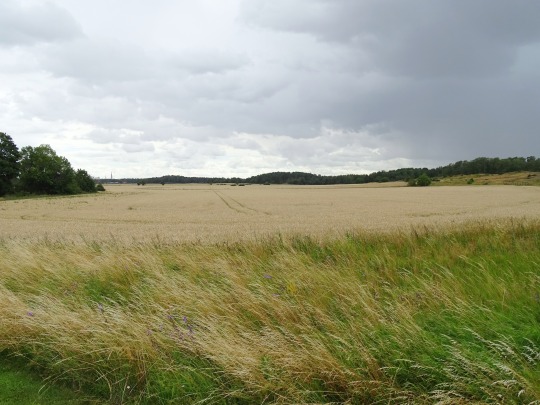

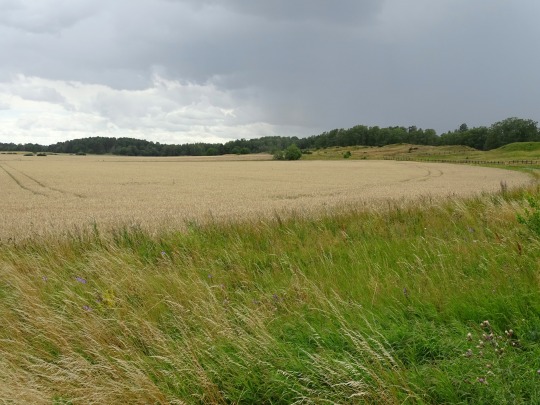

Old Uppsala Archaeological Area, Sweden (No. 2)
People have been buried in Gamla Uppsala for 2,000 years, since the area rose above water. Originally there were between 2,000 and 3,000 mounds in the area but most have become farmland, gardens and quarries. Today only 250 barrows remain.
In the parish there are more than 1,000 preserved archaeological remains, but many more have been removed by agriculture. There are cairns of splintered stone that reveal that the area was settled during the Nordic Bronze Age, but most of the grave fields are from the Iron Age and the Viking Age.
The great grave field south of the Royal Mounds is from the Roman Iron Age and the Germanic Iron Age. Near the vicarage, a few unburnt graves from the Viking Age have been excavated.
Under the present church in Gamla Uppsala have been found the remains of one or several large wooden buildings. Some archaeologists believe that they are the remains of the Temple of Uppsala, while others hold that comes from an early Christian wooden church. Churches were often built on pre-Christian sacred sites, though.
Adjacent to the present church there is a plateau of clay, the Plateau of the Royal Estate (Kungsgårdsplatån), on which archaeologists have found the remains of a large hall.
Source: Wikipedia
#Old Uppsala Archaeological Area#Gamla Uppsala#Royal Mounds#grass#Kungshögarna#archaeology#Swedish history#landscape#countryside#fields#original photography#free admission#tourist attraction#landmark#Uppland#Iron Age#Viking Age#hills#Sweden#Sverige#summer 2020#Scandinavia#Northern Europe#windy#rainy#wildflower#vacation#travel
2 notes
·
View notes